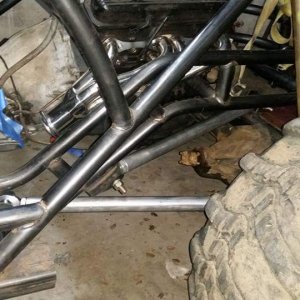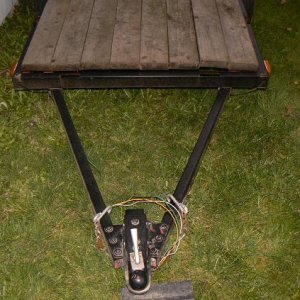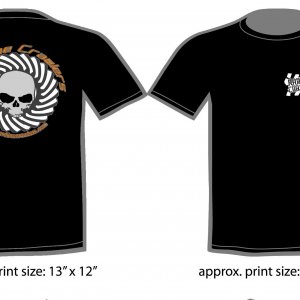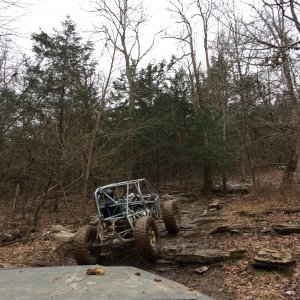If you don't touch the wheel, you could "theoretically" drive it in a straight line at 100mph without anything moving in the hydraulic system.
Which would be great, if every road out there was dead flat, straight, and level, lol. The non load reactive was a plus for me, as one of my primary reasons for wanting to go to some level of power steering was to restrain a rock hit from ripping the steering wheel out of my hands, which was brutal on the stock Samurai steering. I figured going non load reactive was the full extreme on the other end, which was perfect, and worst case scenario it would just require a bit more attention to steering off trail.
No tech to add, but I've got my DE ram offset probably 6" and run only 2-3* caster and mine runs fine up to 50 mph. It's a little twitchy but I attribute it to being a fast orbital and crappy tires for that speed.
Wish I had more help to offer, but I don't think the offset ram is the culprit here.
Knowing other people have successfully run something that offset without major issue is actually a big help in narrowing down where exactly the problem lies. I figured I'd be a bit twitchy too being a 2.5 turns lock to lock setup, just not nearly this bad, lol.
As I've mentioned before, this is all new stuff to me, so I'm facing a bunch of unknowns. I realize changing so much at once (axles, suspension and steering all at the same time) isn't great for troubleshooting purposes, but then it also seems silly to attempt to get mechanical steering to work on a 4 link like this knowing it wasn't going to be the final setup anyways.
The power beyond port is just a "return" port - when you're not steering, it is the main return port.
When you are steering, the flow coming back from the ram goes out the T port.
There should be no issue with having them tee'd together. (unless there is a restriction in your return line or something causing backpressure... Did your burned up pump fill the filter with metal?)
Doesn't appear to be a clogged filter, I don't feel like it's losing the power part of the power steering at all, system bleeds out quick, and I can see a healthy flow of fluid going through the reservoir at idle. It seemed more like I just had the pressure safety valve lock in full bypass on the old pump rather than a metal failure, but I never cracked it open to verify either. I just grabbed another off a parts car, slapped it in, and kept going.
Regardless, probably wouldn't hurt to pick up a new filter from Napa either just to play it safe.


![20200907_171050[1].jpg](http://attachments.www.hardlinecrawlers.com/xfmg/thumbnail/13/13866-e8a7bb15efc63a2d787161e717f09643.jpg?1625929996)






